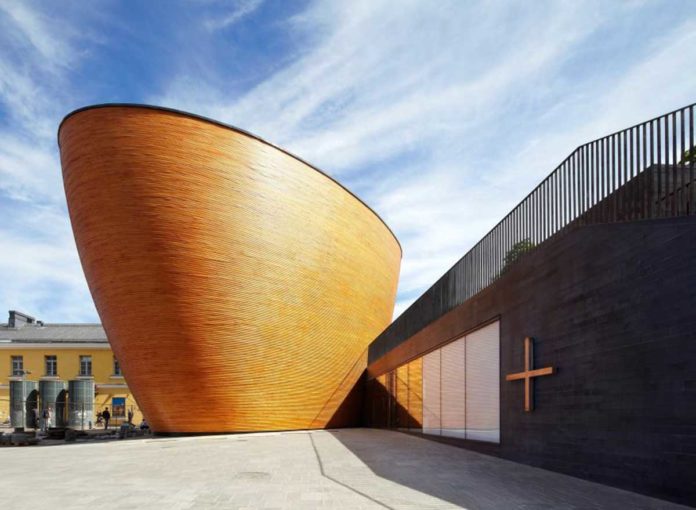In a new study, scientists used wood’s natural ability to flex while trying to create curved structures easily. The study conducted by the scientists at Laboratory for Cellulose & Wood Materials and the Institute for Building Materials, ETH Zurich in Switzerland and the University of Stuttgart, in Germany- suggests a way to take advantage of wood’s natural ability to absorb and release moisture to make similar structures.
Creating curved structures from used is quite tricky as it takes a lot of energy and produces a lot of waste. This is because machines are typically used to cut or grind off undesired parts of the wood.
Scientists started with the idea that it should be possible to predict the way wood warps and by how much. To find out if that was the case, they created computer simulations that accounted for such factors as the type of wood and how much moisture it contained.
Next, they reasoned that if they could get many pieces of wood to bend predictably using only their natural warping tendencies, they could use them to create desired shapes. They created computer models of wood planks made of different types of wood and ran them through simulated wet and dry periods. The researchers report that their models showed that it should be possible to create complex curved structures without resorting to machining. To that end, they designed a 14-meter structure they dubbed the Urbach Tower and then built it at a real site in Germany.
Scientists used wet wood of different types to create such curved structures. They created a layered plank by gluing thin planks together.
As the planks dried, one of the layers would shrink, while the other did not, forcing the entire plank to bend without cracking. After the desired shape was obtained, the wood would be bonded to prevent further change—and then combined with other planks that were turned in specific ways to build an entire structure.
Scientists reported about their discovery in Journal Science Advances.
